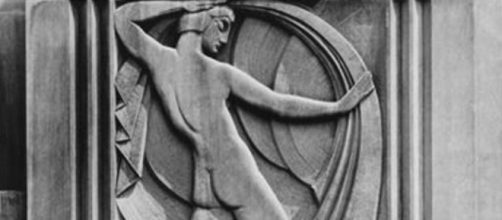It’s not mentioned that trump Tower went up when Bonwit Teller, an upscale department store that stood on Fifth Avenue for nearly a century, went down. During the demolition, Donald’s true colors about art exploded in New York’s face. He had pledged to the Metropolitan Museum of Art that a beloved pair of 15-foot-tall bas-relief sculptures fronting the store would be salvaged for the Met’s collection if he could manage it. Instead, he ordered the artworks destroyed. And when the New York Times criticized him for that, he said the works had no “artistic merit.” He also said that saving the artwork would have cost him half a million dollars in delays in constructing his $100 million Tower.
But even if what Trump said about cost was true, (you never know given his penchant for “alternative facts), a half million for history sounds like a steal.
The Met, the movies, and Trump’s motives
Ashton Hawkins, the museum’s vice-president, explained to the Times that money wasn’t the issue. “Architectural sculptures of this quality are rare and would have made definite sense of our collections. Their monetary value was not what we were interested in.” Clearly, Trump didn’t get that. To give you an idea of how integral the face of Bonwit Teller has been in American culture, it appeared in several films in movie history: “Breakfast at Tiffany’s” in 1951, “Die Hard with a Vengeance” in 1995, “Oliver’s Story” in 1978,” Rocky II” in 1979, “Mad Men,” the TV series in 2009, and “Window Wonderland.” A Hallmark Channel movie in 2013,
A latter-day Louis XIV
Trump’s intent to kill off support for art in his first budget is not surprising for another reason.
He’s not a man of quiet tastes. He likes shiny things, and Bonwit’s gray stone sculptures were not glossy. It is well known that the three floors of his penthouse Tower apartment not only drip with gaudy 24k gold flourishes but also glisten with polished pink marble. His tastes appear to run after those of Louis Xiv whose style revolved around his aim to show off his power.
Follow the money
The outrage over the lost sculptures in New York was reflected in the words of Mayor Ed Koch’s spokesman who told The Washington Post that Trump had a “moral responsibility to consider the interests of the people of the city." But reasons for getting rid of the iconic sculptures kept coming, like the safety of pedestrians if the sculptures fell on their heads.
There was also some supposed opinion of appraisers that the sculptures were worthless.
So many reasons. Take your pick. And here’s another clue into Trump’s unwillingness to spend money on art. When his wife Melania bought a 6-foot tall portrait of him for $20,000 at a charity auction, she used funds from his charitable foundation. For all the reasons above, it’s fair to say that his willingness to do in the NEA was a historical inevitability.

